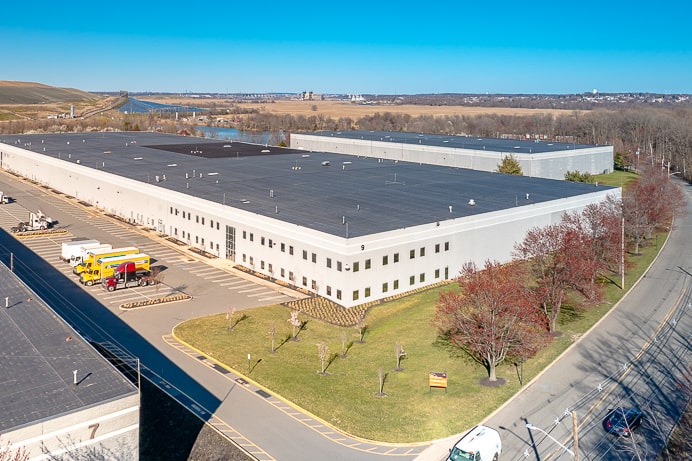In an increasingly globalized economy, businesses constantly seek ways to enhance competitiveness, streamline operations, and reduce costs. One powerful tool available to companies operating in the United States is the Foreign Trade Zone (FTZ). These designated areas offer a range of benefits that can significantly impact a company’s bottom line. CONRI’s blog will explore what FTZs are, how they operate, and the myriad advantages they provide to businesses.
What is a Foreign-Trade Zone (FTZ)?
A Foreign-Trade Zone (FTZ) is a specific location within the United States where companies can benefit from special customs procedures. These zones are designed to encourage the U.S. activity and add value by providing competitive advantages over foreign alternatives. FTZs are under the supervision of U.S. Customs and Border Protection (CBP) and must be approved for activation by local CBP officials. The primary goal of FTZs is to facilitate international trade and enhance the global competitiveness of U.S.-based businesses.
Key Benefits of Using an FTZ
1. Duty Exemption:
One of the most significant benefits of an FTZ is the exemption from duties on re-exported goods. Companies can import foreign merchandise into an FTZ without paying customs duties, provided the goods are eventually re-exported. This can result in substantial cost savings for businesses involved in international trade. For example, a company that imports raw materials from abroad, processes them in the U.S., and then exports the finished products can avoid paying duties on the imported materials.
2. Duty Deferral:
For goods that are eventually sold in the U.S. market, customs duties and federal excise taxes are deferred until the merchandise leaves the FTZ. This deferral can improve cash flow and reduce the financial burden on companies. By delaying the payment of duties, businesses can allocate their resources more effectively and invest in other areas of their operations.
3. Logistical Benefits:
FTZs offer streamlined customs procedures, such as “weekly entry” or “direct delivery,” which can simplify and expedite the import and export process. This can lead to faster turnaround times and reduced administrative costs. For instance, a company using the “weekly entry” procedure can consolidate multiple shipments into a single customs entry, reducing paperwork and processing time.
4. Inventory Tax Exemption:
Foreign and domestic goods held for export within an FTZ are exempt from state and local inventory taxes. This can result in significant tax savings for companies with extensive inventories. By storing goods in an FTZ, businesses can avoid the financial burden of inventory taxes, which can be particularly beneficial for companies with seasonal or fluctuating inventory levels.
5. Production Flexibility:
Companies can use foreign-status components to manufacture products within an FTZ. If these products are exported, no U.S. duties are payable on the value of the foreign components. If the products are sold in the In the U.S. market, duties are generally based on the classification of the finished product, which can sometimes result in lower duty rates. This flexibility allows businesses to optimize their production processes and reduce costs.
6. Privileged Foreign (PF) Status:
Merchandise admitted to an FTZ in PF status is subject to duties based on its condition at the time of admission, regardless of any transformation within the FTZ. This can provide predictability and potential cost savings for companies. For example, if a company imports raw materials and transforms them into a finished product within the FTZ, the duties will be based on the raw materials’ value rather than the finished product’s value.
7. Transfer Flexibility:
Merchandise can be transferred between FTZ operations under customs bond without duty payment. This allows for manufacturing products using foreign-status components, which can then be transferred to another FTZ operation for further processing or export. This transfer flexibility enables businesses to create efficient supply chains and reduce costs associated with multiple duty payments.
How FTZs Work
FTZs operate under the supervision of CBP and must be approved for activation by local CBP officials. Once a site has been granted zone status, it cannot be used for zone activity until it has been separately approved for FTZ activation. The zone activity remains under the supervision of CBP, ensuring compliance with all relevant regulations.
Adjacency Requirements
FTZ sites must be within or adjacent to a CBP port of entry. This requirement can be satisfied if the site is within 60 statute miles or 90 minutes’ driving time from the outer limits of a CBP port of entry. Subzones outside these limits can qualify if they work with the CBP Port Director to ensure proper oversight. This proximity to CBP ports of entry ensures efficient customs processing and oversight.
Conclusion
Foreign-Trade Zones offer a wealth of benefits that can help U.S. businesses reduce costs, improve cash flow, and enhance their competitiveness in the global market. By taking advantage of duty exemptions, deferrals, and streamlined customs procedures, companies can optimize their shipping operations and achieve significant financial savings. FTZs provide a flexible and efficient way for businesses to manage their international trade activities, making them an invaluable tool in today’s global economy. If you have questions about how your business can benefit from FTZs, contact our team today!

